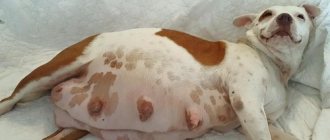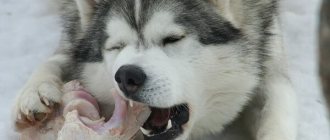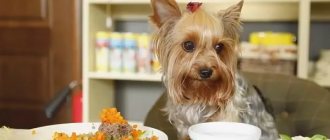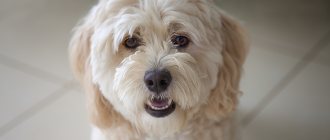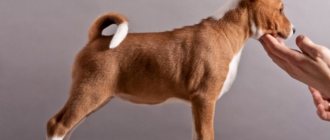Many owners remain ardent fans of natural nutrition for their pets, and under no circumstances accept industrially produced food. Sometimes veterinarians themselves advise switching the dog to natural food: cereals, meat, cottage cheese, vegetables, etc. (indication, for example, a therapeutic diet). However, despite all the charm of such a healthy diet, some cereals are not allowed for mustaches. What grains can and cannot be given to dogs? And which ones are completely contraindicated? What cereal is the healthiest for a dog? How and with what is it better to cook it so that it is tasty and balances the diet?
How harmful are porridges?
Dogs are carnivorous animals. In the wild, their ancestors ate primarily meat. Therefore, cereals are not a natural food for this species.
Excess cereals in the diet negatively affects the acidity of the stomach. This organ begins to produce digestive juices in insufficient quantities. As a result, it becomes difficult for the pet to digest natural food - meat and bones.
In addition, excessive consumption of cereals promotes the proliferation of putrefactive bacteria in the intestines. At the same time, toxic substances penetrate into the blood, causing allergic reactions.
Sample diet for dogs
A well-designed menu for a pet is the key to its excellent health and good mood. Therefore, it is important to know what and in what proportions it is recommended to include in a dog’s diet:
- Meat and offal
are the main components of the daily dog menu. The share of meat products in the total daily feed volume should be at least 50%. - fish fillet
no more than twice a week. You should choose low-fat varieties of sea fish, since river fish carries the risk of helminthiases and is too bony. It is better not to offer fish raw, but definitely boil it. - A variety of vegetables
acceptable for feeding dogs should make up approximately 10-20% of the main daily food volume. They provide animals with vitamins and fiber. - Cereals
recommended for a dog’s diet should make up at least 30% of the total daily food volume and be offered in the form of crumbly porridges with meat and vegetable additives. - Fermented milk products
in an amount of approximately 10% must be included in a dog’s diet. They are useful as a source of calcium and help normalize intestinal microflora.
Regular whole milk, homemade or processed, is not recommended for pets. Fermented milk products should not have high fat content, contain sugar or flavoring additives. The following are definitely suitable for dogs: kefir, fermented baked milk, yogurt, white yogurt, cottage cheese.
Knowing how to properly organize a balanced diet for your dog, you can create a diet that fully meets the daily energy needs of your pet’s body. Which, in turn, guarantees the normal development of the dog, prevents diseases, and strengthens the overall health of the pet.
Do you like the article? 235
The healthiest porridges
Dog handlers consider it acceptable to give dogs porridge made from buckwheat and rice. Millet and oatmeal are less useful. When choosing cereal, it is important to consider the size and breed of your pet.
Large breeds of dogs, in the absence of contraindications, can eat all of the above grains. For example, the German Shepherd is able to adapt well to any menu.
Small and decorative breeds of dogs need to select porridge very carefully and carefully. Dog handlers recommend giving them very small portions of buckwheat. In this case, you need to monitor the animal’s well-being. If your pet's ears become itchy or red, this indicates an allergy. In this case, porridge should be completely avoided.
Next we will talk in more detail about the healthiest cereals for dogs.
Do you need vitamins?
Many dogs are selective about vegetables, greens and fruits. Such “gourmets” are recommended to add daily supplements to their basic diet, for example:
- Nutri-Vet Multi-Vite;
- 8 in 1 Excel Multi Vitamin.
If the dog’s diet is sufficiently varied and balanced, vitamins are given in courses of 4-8 weeks once a quarter or as needed (periods of increased stress for sporting and hunting dogs, cold seasons, seasonal shedding), for example:
- Beaphar Laveta Super;
- Canina Enzym – Hefe;
- Phytoelite.
Vitamins are selected taking into account the size of the dog. Feeding a St. Bernard complex to a Yorkie will not be beneficial. An excess of vitamins is just as dangerous as a deficiency.
There is no need to change the diet if it meets all the dog’s needs. The body adjusts and adapts to the digestion of certain foods over a long period of time. Sudden changes (even switching from one grain to another) can cause digestive upset.
Buckwheat
This is the healthiest porridge for a dog's body. It contains minerals that strengthen bones and have a beneficial effect on blood vessels.
If there is little snow, there will be no harvest: December 16 is Ivan the Silent Day
Rare shot: Viktoria Isakova showed her grown-up daughter from Yuri Moroz (new photo)
Smooth and fresh skin: dermaplaning, or why a woman needs to shave her face
Cover the cereal with water and leave overnight. In the morning, drain the liquid along with the husks. Then mix buckwheat and water in a 1:2 ratio. Cook the porridge for 15 minutes, and then leave in the pan for about 20 minutes.
The porridge is prepared without salt or seasonings. After cooking is complete, you can add a little vegetable oil to the warm buckwheat.
What to do if you vomit after it?
If after eating semolina porridge (or in any other case) the dog vomits, it is necessary to provide it with first aid.
- Ensure rest - try to put your pet down and cover with a blanket if he is shaking.
- Encourage and calm the pet - he should feel cared for and needed; Under no circumstances should you allow yourself to worry or feel guilty.
- the soiled fur with a rag or towel soaked in warm water - carry out the procedure only when the dog is calm; if the animal feels uncomfortable, it is better to wait a little.
- Place disposable diapers or unnecessary towels in case of repeated vomiting.
- Carefully monitor the animal for signs of impending vomiting or deterioration of the condition - these include gagging, stiffness, immobility, prolonged aimless walking around the room.
If the pet's condition has returned to normal and vomiting does not recur, it is recommended to give the pet a rest. In addition, for the first time after vomiting you will have to adhere to some nutritional recommendations.
- It is not advisable to feed the animal for 12 (8-10 for young dogs and puppies) hours after vomiting, so as not to provoke repeated attacks and not to overload the irritated stomach.
- Solder with water - every hour you need to give 2 tsp per 1 kg of weight. Give water until the dog starts drinking on its own. Also, you can give a rehydron solution (according to the instructions), according to the same scheme as water.
- If your pet refuses to drink, you need to wipe its gums with a napkin/rag soaked in water . You can also try giving ice cubes or warm herbal tea (chamomile, ginger, mint).
- After 12 (8-10) hours, you need to start giving light, easily digestible food - boiled potatoes, boiled skinless chicken, beef cutlet, boiled rice or pressed cottage cheese. Give food 2-3 tsp. each hour.
- Follow this dietary diet for 24 hours , then carefully begin to introduce regular food - mix dietary and regular food in equal proportions for the first feeding, then, with each feeding, gradually reduce the proportion of dietary food.
- Under no circumstances should you give any medications without the permission of your veterinarian.
It is worth understanding that vomiting can be caused not only by poorly prepared or poor-quality food, but also be a symptom of various serious pathologies.
Therefore, if the following signs are detected, it is urgent to show the animal to a specialist:
- pale skin and gums;
- atypical behavior, depression;
- weakness, loss of strength;
- difficulty walking or standing up;
- problem raising the head;
- repeated or recurring vomiting, inability to retain water.
In addition, if your dog has any chronic diseases, you should also consult with a specialist before restricting its food.
Rice
Rice porridge is rich in vitamins and minerals. It is useful for the functioning of the heart, blood vessels and genitourinary system. Brown rice has the most valuable qualities.
Rinse the rice and then drop it into boiling water. Cook for about 30-35 minutes, and then leave for another half hour. The grains do not need to be boiled too much; the porridge should be crumbly.
Rice porridge is given to dogs with broth, meat or vegetables. To prevent the grains from sticking together, you can add a little sunflower oil.
Is there any benefit?
Semolina is processed remains of wheat grain. With such processing, only the central part of the grain remains, as a result of which the cereal loses almost all its vitamins, minerals and fiber.
However, it is precisely the low fiber content that makes semolina necessary for feeding dogs with problems with the digestive tract.
In addition, semolina is the purest carbohydrate, which is ideal for feeding puppies or small animals. But it should be introduced into your pet’s diet only on the recommendation of a veterinarian.
What cereals should you avoid?
Some cereals are strictly contraindicated for dogs. Avoid feeding your pets the following cereals:
- Manna. This food is useless for dogs, as it does not contain valuable microelements. Eating semolina clogs the stomach and leads to obesity.
- Corn. This product is very poorly absorbed and causes bloating.
- Yachneva. Such cereals create a large load on the stomach, cause a feeling of heaviness in the stomach and lead to constipation.
- Perlova. This porridge is almost not absorbed by the dog’s body and often causes allergies.
In addition, dogs should not be given any milk cereals. Many pets are very lactose intolerant. In the practice of veterinarians, there were often cases when milk caused volvulus in animals. This is an unnatural product for an adult dog. After all, in nature only puppies feed on milk.
Questions for the veterinarian
Feeding dogs always raises many difficulties for pet owners who care about their health. Experienced veterinarians will help answer basic questions.
What is the best porridge to feed a dog?
The most useful are rice and buckwheat . They contain many vitamins, micro- and macroelements, vegetable proteins. In addition, they provide a lot of energy, are easy to digest, and do not cause allergies or gastrointestinal problems. They can be given from puppyhood. You can also feed your dog rolled oats or oatmeal, egg or wheat porridge (if they are well tolerated).
Is it possible to give a dog pearl barley porridge?
Feeding your dog pearl barley porridge is not recommended. This cereal is affordable, contains useful elements, but is almost not digested by the dog’s stomach. Therefore, the animal cannot absorb nutrients.
Is it possible to feed a dog pea porridge?
The use of legumes, including peas, as a basis for preparing porridges and other dishes for dogs is not recommended. Dishes are difficult to digest, provoke gas formation, fermentation, pain in the intestines, constipation, and liver problems.
Is it possible to give porridge with milk or salt?
It is acceptable to add a small amount of salt to an animal's food, but it requires a minimal dose. Salt is prohibited for puppies. Porridge can also be prepared with milk, but only for young individuals. In adult dogs, the product is most often not digested, causing diarrhea and gastrointestinal upset. Dishes cooked in water are more suitable for them.
Despite the fact that almost all cereals are rich in nutrients, many of them cannot be used when feeding dogs. Allowed options can be prepared in water, observing the correct proportions and the required temperature treatment time. You can add meat, vegetables, herbs, and butter to a nutritious dish to make the product even tastier and healthier.
4 / 5 ( 8 votes)
Possible additives
To diversify your diet, you can add to porridge:
- Vegetables. It is advisable to add them to the finished product. During cooking, vegetables lose most of their beneficial elements. It could be pumpkin, cabbage, cucumber, tomato, carrot. Vegetables should make up a third of the entire serving. You should not add onions and garlic to porridge.
- Meat and minced meat. Pork and offal must be boiled. They can be carriers of plague pathogens.
See also: Ticks in dogs: symptoms and proper treatment
One serving should contain 50% meat products, 30% porridge and 20% vegetables. Eggs, treats and fish are allowed in small quantities.
Prohibited dairy products
Milk
It is not recommended to give it to dogs that have not fed it after weaning. The fact is that as they grow older, their body stops producing an enzyme that helps digest and absorb milk, which can lead to indigestion and sometimes causes allergic reactions.
However, as mentioned above, some dogs can eat milk that is low in fat and lactose.
Tan and ayran
These fermented milk products contain salt, which is not recommended for dogs. In addition, they have a very specific taste and may simply not be to your pet’s liking.
Condensed milk
It contains high sugar content, which negatively affects the dog's health.
Ice cream
This is a high-calorie dairy product, which is made from milk and butter, or even with the addition of vegetable fats. In addition, ice cream, like condensed milk, contains sugar, so it is not recommended to give it even as a treat or reward. However, there is a special dog ice cream that can be prepared at home.
Recipe
- Classic yogurt without sugar - 1 glass;
- Medium ripeness banana - 1 pc.;
- Honey - 1-2 teaspoons (optional).
Mash the banana with a fork, add honey and yogurt to it. Mix all the ingredients, form small balls and place them in the freezer for several hours. If the mixture is too liquid, pour it into ice cube trays.
Why can't you give?
Semolina can rightfully be called a rather specific product - although it has some benefits for the body, there are also disadvantages.
- Frequently feeding a dog semolina porridge leads to excess weight gain.
- Semolina, like pasta, contains gluten, which has a cumulative effect, and if consumed excessively, it can cause severe allergies.
- Semolina can also significantly increase blood sugar levels, which makes it absolutely unacceptable for pets with diabetes.
